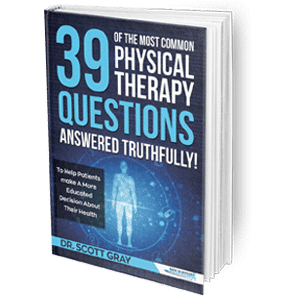How to Heal a Herniated Disc without Surgery?
A herniated disc can press on the nerves in your spine and give rise to pain, weakness, and numbness in several body parts, including neck, back, arms and legs. Sometimes these symptoms can be severe enough to hamper your life. Problems of your herniated disc condition should start to improve on its own within a few weeks. The improvement can speed up if accompanied by physiotherapy sessions and a few targeted exercises. Doctor may also prescribe some home exercises and pain killers.
What causes a herniated disc?
Your spines are made of individual bones or discs that stack up to structure your entire spine. Spinal disc is composed of a softer center encased in a firm exterior. Sometimes some of this softer jelly-like structure pushes out through a tear in the tougher exterior. This irritates the nerves nearby and results in pain, numbness and weakness. In some cases, many people experience no pain. In the majority of cases, people don’t need surgery to correct the problem. Some exercise, physiotherapy and home remedies can help treat the condition.
Try one or more of the following exercises to help you feel better.
1) Use Rotation Exercises to Strengthen Outer Layer of Disc
The core muscles of your body always play an essential role in supporting the lower spine. One of the major causes of a slipped disc is poor core muscles. Weak core muscles lead to increase the strain in the spine which results in slipped disc. Thereby, rotational exercises that strengthen the core muscles are an important aspect in the treatment of slipped disc. It is crucial to do safe herniated disc exercises that are gentle on your spine and provides extra support to your body. Some of the most helpful rotational exercises to strengthen the outer layer of disc are – towel stretch, seated hamstring stretch, wall stretch, spinal decompression, cobra pose, cat-cow, plank, supported plank, child’s pose.
2) Try Repeated Extension Exercises
Extensions exercises are great for our backs. They help strengthening the back and help remove aches and pains away. Some of them might be challenging, especially when you are already suffering with herniated disc. Repeated extension exercises are often recommended to patients suffering with herniated disc. Some of the best extension exercises for a better back are – swimming pose, dart move, cow pose, plank pose, and swan pose.
3) Perform Positional Distraction
Positional distraction is a form of decompression therapy used to heal herniated disc. The treatment focuses on relieving pressure on the spine. Also known as spinal traction, it is used to treat herniated discs, sciatica, and many other back conditions. Positional distraction is often carried out under clinical supervision. Mechanical traction is carried out through the following steps:
Place the traction device in the case on a firm surface or bed with the wheels facing up. For home remedies, you can also make the device by rolling a pillow on a sheet to form a firm device for traction. The traction is then applied by placing the patient in different position using the device, blocks or pillows. The focus is to affect a longitudinal pull on the spinal structures.
Want to See How We Can Help You?
Claim A Free 20 Minute Discovery Visit….
Do you suffer from a herniated disc? It is advisable to find an expert and get it treated before it takes a toll on your health and turns into a risky surgery you don’t need. To learn how our back pain specialists can help you all you need to do is click here.

GET YOUR FREE REPORT
39 of the most common Physical Therapy questions answered truthfully
About Author: Dr. Scott Gray
Dr. Scott Gray is an internationally recognized and expert physical therapist specializing in sport, athletic, and back and neck injuries. He is the inventor of a revolutionary form of treatment called the GRAY METHOD. This type of treatment unlike others, addresses the CAUSE rather than just your SYMPTOMS with a full body approach. For more information on how to ease or overcome your injury, go to www.backinmotionsspt.com.




